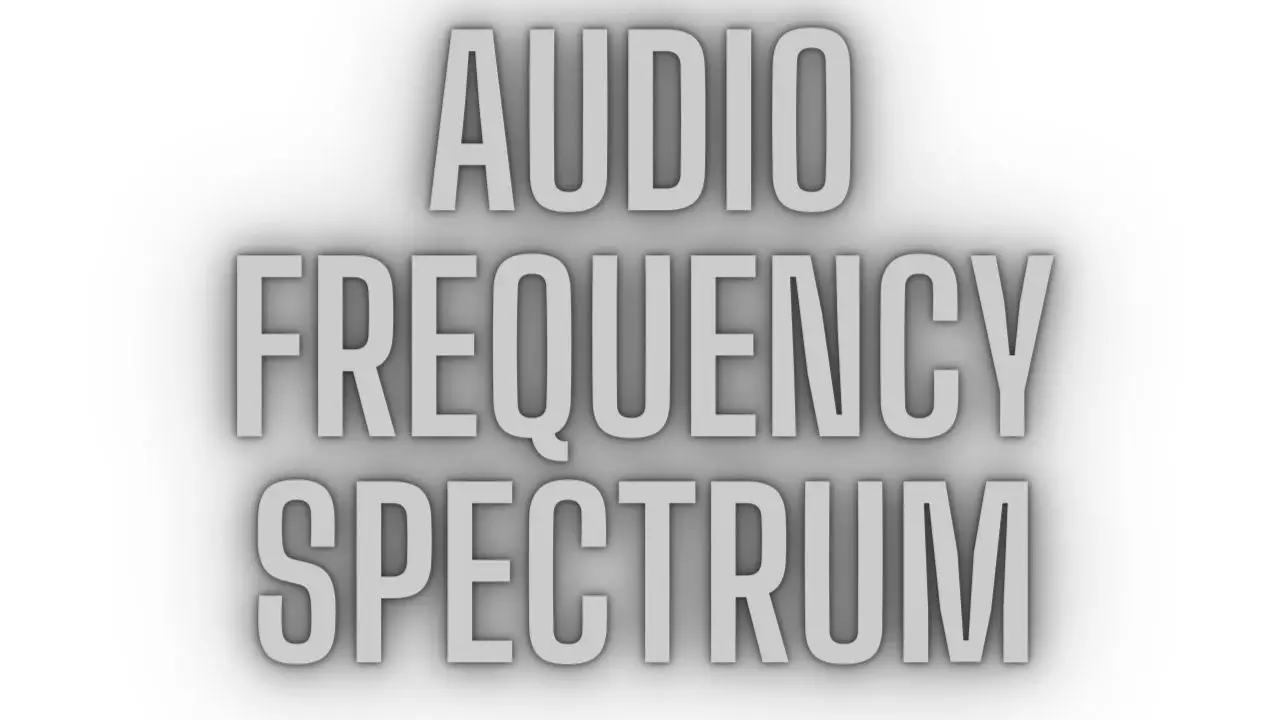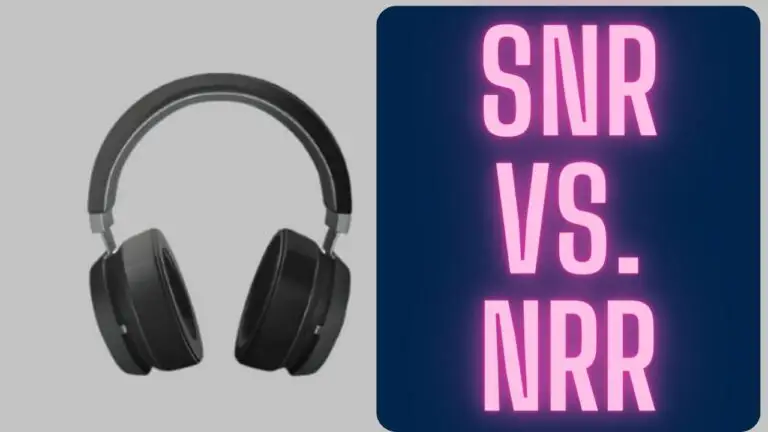Audio Frequency Spectrum: From Infrasound to Ultrasound
Introduction
The audio frequency spectrum encompasses the range of frequencies that humans can perceive as sound. Understanding this spectrum is essential for various applications in audio engineering, music production, telecommunications, and many other fields. In this introduction, we will explore the basics of the audio frequency spectrum, its significance, and its relevance in different contexts.
Sound, as perceived by the human ear, consists of vibrations in the air that produce waves of varying frequencies. These frequencies are measured in Hertz (Hz), with one Hertz representing one cycle per second. The audible range for humans typically spans from about 20 Hz to 20,000 Hz, although individual hearing capabilities may vary.
Different frequency ranges within the audio spectrum contribute to the characteristics of sound, such as pitch, timbre, and clarity. Understanding these frequency ranges allows audio professionals to manipulate and enhance sound in various ways, whether it’s adjusting the bass response of a speaker system, equalizing a musical instrument, or optimizing audio recordings for clarity and fidelity.
Moreover, the audio frequency spectrum is crucial for communication systems, where different frequency bands are utilized for transmitting voice, music, or data. By allocating specific frequency ranges for different purposes, engineers can optimize efficiency, minimize interference, and ensure reliable transmission of audio signals.
In this comprehensive guide to the audio frequency spectrum, we will delve into the intricacies of different frequency ranges, explore their applications across various domains, discuss methods for measuring and analyzing frequency spectra, and highlight the importance of frequency response in audio equipment. By the end of this exploration, readers will gain a deeper understanding of the fundamental principles underlying sound and its manipulation across the frequency spectrum.
Understanding Frequency in Audio
Frequency is a fundamental aspect of sound and plays a crucial role in shaping the characteristics of audio signals. In the context of audio, frequency refers to the rate at which sound waves vibrate, measured in Hertz (Hz). Understanding frequency is essential for various aspects of audio engineering, including music production, sound reproduction, and communication systems. Here are key concepts to grasp when considering frequency in audio:
- Pitch Perception:
- Frequency directly correlates with the perceived pitch of a sound. Higher frequencies are perceived as higher pitches, while lower frequencies are perceived as lower pitches. For example, a high-frequency sound wave corresponds to a high-pitched note, such as a whistle, whereas a low-frequency sound wave corresponds to a low-pitched note, such as a bass drum.
- Frequency Range:
- The audible frequency range for humans typically spans from about 20 Hz to 20,000 Hz (20 kHz). However, individual hearing capabilities may vary, and factors such as age, exposure to loud noises, and genetics can affect one’s ability to perceive certain frequencies.
- Subdivisions of the Frequency Spectrum:
- The audible frequency range can be subdivided into different frequency bands, each with its own characteristics and applications. These bands include:
- Subsonic Frequencies (Below 20 Hz): Frequencies below the audible range, often felt as vibrations rather than heard.
- Bass Frequencies (20 Hz – 250 Hz): Low-frequency range responsible for bass and sub-bass sounds in music.
- Midrange Frequencies (250 Hz – 4 kHz): Middle-frequency range where most speech intelligibility and musical instruments’ fundamental frequencies reside.
- Treble Frequencies (4 kHz – 20 kHz): High-frequency range containing overtones, harmonics, and high-pitched sounds.
- Ultrasonic Frequencies (Above 20 kHz): Frequencies above the audible range, often used in specialized applications such as ultrasonic cleaning and medical imaging.
- The audible frequency range can be subdivided into different frequency bands, each with its own characteristics and applications. These bands include:
- Equalization (EQ):
- Equalization is the process of adjusting the balance of frequencies within an audio signal to achieve desired tonal characteristics or compensate for deficiencies in a sound system. Equalizers allow users to boost or cut specific frequency bands, shaping the overall frequency response of audio signals.
- Harmonics and Overtones:
- Harmonics and overtones are higher-frequency components present in complex sounds, such as musical tones. These additional frequencies contribute to the timbre or coloration of a sound, influencing its perceived richness and character.
- Frequency Modulation (FM) and Amplitude Modulation (AM):
- Frequency modulation and amplitude modulation are modulation techniques used in radio broadcasting and telecommunications to transmit audio signals over the airwaves. Frequency modulation involves varying the frequency of a carrier wave according to the audio signal, while amplitude modulation varies the amplitude or intensity of the carrier wave.
Understanding frequency in audio is essential for audio professionals to manipulate, process, and reproduce sound accurately and effectively. By mastering the concepts of frequency and its role in shaping the sonic landscape, engineers, musicians, and sound designers can create immersive auditory experiences that captivate and engage audiences.
Frequency Ranges in the Audio Spectrum
The audio spectrum encompasses a wide range of frequencies that contribute to the characteristics of sound. Understanding the different frequency ranges within the audio spectrum is essential for various applications in audio engineering, music production, telecommunications, and more. Here are the primary frequency ranges in the audio spectrum:
- Subsonic Frequencies (Below 20 Hz):
- Subsonic frequencies are below the threshold of human hearing and are typically felt as vibrations rather than heard. These frequencies are often encountered in nature, such as the rumble of earthquakes or the deep tones of large machinery.
- Bass Frequencies (20 Hz – 250 Hz):
- Bass frequencies are characterized by low-pitched sounds that provide the foundation and weight in music and sound reproduction. In music production, bass frequencies are crucial for creating a sense of rhythm, groove, and impact. Examples include the deep rumble of a bass guitar or the thump of a kick drum.
- Low Midrange Frequencies (250 Hz – 500 Hz):
- Low midrange frequencies contribute to the warmth and body of audio signals. They affect the perceived fullness and richness of sound, particularly in vocals and acoustic instruments. Proper management of low midrange frequencies is essential for achieving clarity and balance in audio mixes.
- Midrange Frequencies (500 Hz – 2 kHz):
- Midrange frequencies are where the majority of speech intelligibility and musical instruments’ fundamental frequencies reside. They play a crucial role in defining the tonal characteristics and timbre of sounds, making them essential for conveying emotion and expression in music and communication.
- High Midrange Frequencies (2 kHz – 4 kHz):
- High midrange frequencies add presence, clarity, and articulation to audio signals. They enhance the definition and detail of sound, making it easier to distinguish individual elements in a mix. High midrange frequencies are particularly important for intelligibility in speech and for accentuating the attack and bite of instruments.
- Treble Frequencies (4 kHz – 20 kHz):
- Treble frequencies encompass the high end of the audible spectrum and contain overtones, harmonics, and high-pitched sounds. They contribute to the brightness, airiness, and sparkle of audio signals, enhancing clarity and detail. Treble frequencies are prominent in instruments like cymbals, bells, and higher-register vocals.
- Ultrasonic Frequencies (Above 20 kHz):
- Ultrasonic frequencies are beyond the range of human hearing and are often used in specialized applications such as ultrasonic cleaning, medical imaging, and industrial processes. While ultrasonic frequencies are not audible to humans, they can still influence audio equipment and electronic devices.
Understanding these frequency ranges allows audio professionals to effectively manipulate and control the tonal balance, clarity, and spatial characteristics of audio signals. By mastering the nuances of each frequency range, engineers and musicians can create immersive auditory experiences that resonate with listeners.
Applications and Importance of Different Frequency Ranges
Each frequency range within the audio spectrum serves specific purposes and plays a crucial role in shaping the characteristics of sound. Understanding the applications and importance of different frequency ranges is essential for various fields, including audio engineering, music production, telecommunications, and more. Here’s a breakdown of the applications and significance of each frequency range:
- Subsonic Frequencies (Below 20 Hz):
- Applications: Subsonic frequencies are utilized in specialized applications such as seismic monitoring, vibration analysis, and ultrasonic testing.
- Importance: While subsonic frequencies are not audible to humans, they can still influence physical structures and electronic equipment. Managing subsonic vibrations is crucial in engineering to prevent structural damage and ensure the reliability of machinery.
- Bass Frequencies (20 Hz – 250 Hz):
- Applications: Bass frequencies provide the foundation and impact in music, particularly in genres like electronic dance music (EDM), hip-hop, and reggae. In audio systems, subwoofers reproduce bass frequencies to enhance the low-end response.
- Importance: Proper management of bass frequencies is essential for creating a sense of rhythm, groove, and energy in music. Balancing bass frequencies with other elements of the mix ensures a cohesive and impactful sound.
- Low Midrange Frequencies (250 Hz – 500 Hz):
- Applications: Low midrange frequencies contribute to the warmth and body of vocals, acoustic instruments, and electric guitars. They play a crucial role in defining the character and timbre of sound.
- Importance: Controlling low midrange frequencies is essential for achieving clarity, balance, and definition in audio mixes. Proper equalization and spectral shaping help prevent muddiness and ensure each instrument occupies its sonic space effectively.
- Midrange Frequencies (500 Hz – 2 kHz):
- Applications: Midrange frequencies are fundamental for speech intelligibility, making them vital in telecommunications, broadcasting, and public address systems. In music production, midrange frequencies define the tonal characteristics of most instruments and vocals.
- Importance: The intelligibility and presence of audio signals heavily rely on midrange frequencies. Balancing midrange frequencies ensures clear communication, accurate reproduction of instruments, and a natural-sounding mix.
- High Midrange Frequencies (2 kHz – 4 kHz):
- Applications: High midrange frequencies enhance clarity, articulation, and attack in audio signals. They are crucial for intelligibility in speech, emphasizing consonants and consonant sounds.
- Importance: High midrange frequencies play a significant role in defining the detail, focus, and definition of sound. Proper management of high midrange frequencies ensures crispness and precision in audio reproduction.
- Treble Frequencies (4 kHz – 20 kHz):
- Applications: Treble frequencies add brightness, airiness, and sparkle to audio signals. They are essential for reproducing high-frequency content in music, such as cymbals, bells, and harmonic overtones.
- Importance: Treble frequencies contribute to the clarity, presence, and dimensionality of sound. Enhancing treble frequencies improves the perceived detail and fidelity of audio reproduction.
Understanding the applications and importance of different frequency ranges allows audio professionals to manipulate and shape sound effectively. By optimizing each frequency range within the audio spectrum, engineers and musicians can create immersive auditory experiences that captivate and engage audiences.
Frequency Response in Audio Equipment
Frequency response is a critical specification in audio equipment that describes how accurately the device reproduces audio signals across the audible frequency spectrum. It represents the device’s ability to reproduce different frequencies with equal amplitude or sensitivity, ensuring faithful reproduction of the original sound source. Understanding frequency response is essential for assessing the performance and quality of audio equipment. Here’s an overview of frequency response in audio equipment:
- Definition:
- Frequency response is a measure of how an audio device (such as speakers, headphones, amplifiers, or microphones) responds to input signals across the audible frequency range. It indicates the device’s ability to reproduce low, midrange, and high-frequency sounds accurately without distortion or attenuation.
- Frequency Range:
- The frequency range covered by audio equipment varies depending on the device’s intended use and design specifications. For example, speakers and headphones typically have a frequency response range that spans from 20 Hz to 20 kHz, covering the entire audible spectrum for humans.
- Flat Frequency Response:
- Ideally, audio equipment should have a flat frequency response, meaning it reproduces all frequencies within its range with equal amplitude. A flat frequency response ensures that all frequencies are reproduced accurately and faithfully, preserving the integrity of the original audio signal.
- Frequency Response Graph:
- Frequency response is often represented graphically on a frequency response curve, which plots the device’s output level (amplitude) versus frequency. A flat line on the graph indicates a flat frequency response, while deviations from the flat line indicate frequency response variations or anomalies.
- Frequency response graphs may include tolerance bands or specifications to indicate the acceptable range of deviation from the flat response within certain frequency bands.
- Effects of Frequency Response Variations:
- Frequency response variations can manifest as peaks, dips, or roll-off in certain frequency ranges, leading to coloration or distortion of the audio signal. Peaks and dips can accentuate or attenuate specific frequencies, altering the tonal balance and perceived character of the sound.
- Frequency response roll-off refers to the gradual decrease in sensitivity or output level at the extremes of the frequency range. Roll-off can affect the reproduction of low bass or high treble frequencies, resulting in a less extended frequency range.
- Importance for Audio Quality:
- Frequency response is a key determinant of audio quality and fidelity in audio equipment. A flat and extended frequency response ensures accurate reproduction of all frequencies, resulting in clear, natural, and balanced sound reproduction.
- Poor frequency response can lead to coloration, distortion, or inaccurate representation of the original audio signal, compromising the overall audio quality and listening experience.
- Measurement and Testing:
- Frequency response is typically measured using specialized test equipment, such as frequency analyzers or sweep generators, to generate test signals across the audible spectrum and analyze the device’s output response.
- Manufacturers may provide frequency response specifications in product datasheets or technical specifications to inform consumers about the device’s performance characteristics.
Understanding frequency response in audio equipment allows users to make informed decisions when selecting, evaluating, or comparing different audio devices. By ensuring flat and extended frequency response, audio equipment can faithfully reproduce audio signals with clarity, accuracy, and fidelity, enhancing the overall listening experience.
Measuring and Analyzing Frequency Spectrum
Measuring and analyzing the frequency spectrum is essential in various fields such as audio engineering, telecommunications, acoustics, and music production. It allows professionals to understand the frequency content of signals, identify anomalies, optimize equipment performance, and ensure high-quality sound reproduction. Here’s an overview of how frequency spectra are measured and analyzed:
- Frequency Spectrum Analysis Tools:
- Spectrum Analyzers: Spectrum analyzers are specialized devices used to measure and display the frequency spectrum of audio signals. They provide visual representations of frequency content in real-time, allowing users to identify peaks, valleys, and harmonic patterns.
- Software-Based Analyzers: There are numerous software applications and plugins available for analyzing frequency spectra on computers and digital audio workstations (DAWs). These tools offer features such as real-time spectrum analysis, spectrograms, and frequency response curves.
- Measurement Techniques:
- FFT (Fast Fourier Transform): FFT is a mathematical algorithm used to convert a time-domain signal into its frequency-domain representation. It breaks down the signal into its constituent frequency components, enabling precise analysis of amplitude and frequency content.
- Sweep Tests: Sweep tests involve sweeping a pure tone or frequency sweep through the audio spectrum and measuring the system’s response at different frequencies. This technique helps identify resonant frequencies, peaks, and dips in frequency response.
- Frequency Response Measurements:
- Frequency Response Curves: Frequency response curves depict the amplitude of a signal at various frequencies, typically displayed on a logarithmic scale. They provide insight into how a device or system responds to different frequencies, indicating areas of emphasis, attenuation, or distortion.
- Impulse Response Analysis: Impulse response analysis measures a system’s response to a transient input signal, such as an impulse or click. By analyzing the time-domain response, one can derive frequency response characteristics, including phase shifts, resonances, and reverberation.
- Harmonic and Distortion Analysis:
- Harmonic Content: Harmonic analysis involves identifying and quantifying harmonic distortion components present in a signal. Harmonic distortion occurs when additional frequencies, known as harmonics, are generated due to nonlinearities in audio equipment or signal processing.
- Total Harmonic Distortion (THD): THD measures the relative amount of harmonic distortion present in a signal compared to the original input. It is expressed as a percentage and provides a metric for assessing the purity and fidelity of audio reproduction systems.
- Room Acoustics Analysis:
- Room Acoustic Measurements: In room acoustics analysis, frequency spectra are measured to evaluate the acoustic characteristics of a room or listening environment. Parameters such as reverberation time, resonance frequencies, and standing wave patterns are analyzed to optimize room acoustics for accurate sound reproduction.
- Equalization and Correction:
- EQ Analysis: Frequency spectrum analysis is used to identify frequency response anomalies in audio systems, such as peaks, dips, or resonances. Based on the analysis, corrective equalization can be applied to compensate for frequency response variations and achieve a more balanced sound.
- Room Correction Systems: Advanced room correction systems utilize frequency spectrum analysis to measure and analyze room acoustics in real-time. They apply digital signal processing techniques to adjust the frequency response of audio systems, compensating for room-related anomalies and enhancing sound quality.
By employing measurement tools, techniques, and analysis methods, audio professionals can gain valuable insights into the frequency characteristics of audio signals, equipment, and environments. This information enables them to make informed decisions, optimize system performance, and deliver high-fidelity sound experiences.
Audio Frequency Spectrum Table
Here is a simplified table outlining the audio frequency spectrum:
| Frequency Range | Description | Applications |
|---|---|---|
| Below 20 Hz | Infrasound | Seismic activity detection, industrial machinery monitoring |
| 20 Hz to 20 kHz | Audible Sound | Human hearing, music, speech, everyday sounds |
| 20 kHz to 1 MHz | Ultrasound | Medical imaging, pest control, cleaning, non-destructive testing |
| Above 1 MHz | Super/Ultrasounds | Medical imaging, industrial processes, animal communication |
Please note that the specific divisions within these ranges can vary depending on the context and the level of detail required for a particular application. This table provides a general overview of the audio frequency spectrum and its main segments.
Audio Frequency Spectrum FAQS
What is the audio frequency spectrum?
- The audio frequency spectrum refers to the range of frequencies within which sound waves vibrate and can be perceived by the human ear. It typically spans from infrasound (below 20 Hz) to ultrasound (above 20,000 Hz).
What is infrasound, and where is it found?
- Infrasound consists of sound waves with frequencies below the lower limit of human hearing (typically around 20 Hz). It can be produced by natural events like earthquakes and volcanic eruptions, as well as by industrial machinery.
What is ultrasound, and why is it used?
- Ultrasound refers to sound waves with frequencies above the upper limit of human hearing (typically above 20,000 Hz). Ultrasound has various applications in medicine (ultrasound imaging), pest control, cleaning (ultrasonic cleaners), and non-destructive testing in industry.
What is the audible sound range, and why is it essential?
- The audible sound range spans from 20 Hz to 20,000 Hz and includes the frequencies that the human ear can perceive as sound. It is crucial because it encompasses the frequencies of human speech and most musical instruments, making it the range of primary interest for audio and music.
How do we measure frequencies in the audio spectrum?
- Frequencies in the audio spectrum are measured in Hertz (Hz), which represents the number of vibrations or cycles per second. Modern technology, such as audio equipment and software, allows for precise measurement and manipulation of frequencies.
What is sonar, and how does it use the audio spectrum?
- Sonar (Sound Navigation and Ranging) is a technology that uses sound waves, often in the ultrasonic range, to detect and locate objects underwater. It’s used in applications like marine navigation, fish finding, and submarine tracking.
Are there animals that can hear frequencies outside the human range?
- Yes, many animals can hear frequencies beyond the human range. For example, bats use ultrasonic frequencies for echolocation, and dolphins communicate using ultrasonic clicks. Dogs can hear higher frequencies than humans, which is why dog whistles are effective for training.
How does ultrasound imaging work in medicine?
- Ultrasound imaging, also known as ultrasonography, uses high-frequency sound waves to create images of internal body structures. A transducer sends and receives sound waves, and the returning waves are used to create real-time images of organs, tissues, and blood flow.
What are some common industrial applications of ultrasonic testing?
- Ultrasonic testing is used in industries like aerospace and manufacturing to detect flaws, cracks, or irregularities in materials. It helps ensure the quality and integrity of products like aircraft components and welds.
How can I explore the audio frequency spectrum in music production?
Music production software, such as digital audio workstations (DAWs), often includes tools for visualizing and manipulating frequencies in the audio spectrum. You can use equalizers, spectrum analyzers, and other plugins to work with different parts of the frequency range.
Conclusion
Understanding the audio frequency spectrum and its different segments is crucial for various fields, from music production to medical diagnostics and wildlife research. While the human ear is limited to a specific range, technology has expanded our ability to work with frequencies both above and below the audible spectrum, opening up a world of possibilities for innovation and discovery.








